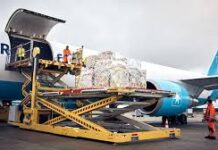Navigating the intricacies of international trade can be a daunting task. As businesses engage in the exchange of goods across borders, one crucial aspect often overlooked is the Bill of Entry. This document acts as a gateway, ensuring that your imports and exports adhere to the necessary regulations. In this guide, we will talk about the documents you need to guarantee in a Bill of Entry status, providing the process for a smoother trade experience.
Understanding the Bill of Entry: A Foundation for International Trade
Before delving into the key components of a Bill of Entry status, here is some of the basic information you need to get. The Bill of Entry is a legal document required by customs authorities. It serves as a declaration by an importer or exporter. The document provides vital information about the nature, quantity, and value of the goods being imported or exported, facilitating seamless customs clearance.
Detailed Product Description and Classification
In the world of international trade, precision is paramount. The first step to ensure a Bill of Entry status is the accuracy of product descriptions and classifications. Clearly articulate the nature of the goods, specifying materials, dimensions, and any unique characteristics. Additionally, adhere to international product classification standards, such as the Harmonized System (HS) codes, to avoid complications at customs.
Declare the Correct Value of Goods
A common pitfall is undervaluing or misrepresenting the value of goods during the description. This can lead to discrepancies, delays, and even legal consequences. Ensure that the declared value and the Bill of entry status reflect the actual transaction value. The value includes all relevant costs, such as shipping, insurance, and any additional charges. A transparent declaration fosters trust and compliance and brings more confidence to the exporter.
Currency Conversion Clarity
In the interconnected web of global trade, various currencies come into play. When dealing with multiple currencies, provide a clear and accurate record of the currency used for transactions and ensure it aligns with international exchange rates. This not only streamlines the customs process but also prevents potential disputes.
Duty Calculation To Navigate Tariffs and Taxes with Precision
Duties and taxes are inevitable in international trade. To ensure a flawless Bill of Entry status, meticulously calculate the applicable tariffs and taxes. Stay informed about the latest tariff schedules and preferential trade agreements to optimize costs legally. A miscalculation here could lead to financial setbacks and unnecessary delays.
Document Compliance
A comprehensive Bill of Entry extends beyond product details and values. This ensures that all supporting documents, such as commercial invoices, packing lists, and certificates of origin, are in order. Missing or incomplete documentation can trigger scrutiny and delays, hindering the efficiency of your supply chain.
Navigating Regulatory Compliance: A Balancing Act
International trade operates within a web of regulations and compliance standards. Your Bill of Entry must serve as a testament to your commitment to adhering to these regulations and filling in the data accordingly.
Regulatory Compliance Check
Regulations governing international trade are dynamic and subject to change at any moment. Regularly update your knowledge base and ensure that your Bill of Entry status rises and aligns with the latest regulations. This proactive approach minimizes the risk of non-compliance, safeguarding your business from potential penalties.
Trade Agreements: Leverage Preferential Treatment
Take advantage of trade agreements and preferential treatment options available to your business. Clearly state if the goods qualify for preferential tariff rates under any trade agreement. This not only enhances cost efficiency but also demonstrates a strategic understanding of international trade dynamics.
Risk Management
In the unpredictable landscape of international trade, risk management is a crucial aspect often underestimated. Identify potential risks such as embargoed countries, restricted goods, or compliance issues. Address these risks transparently in your Bill of Entry, showcasing your commitment to ethical and lawful trade practices. This will help foresee the future and make decisions accordingly. The terms can be regulated accordingly.
Communication and Collaboration
The success of international trade is looped with effective communication and collaboration between all stakeholders. Your Bill of Entry status is not just a transactional document; it’s a communication tool that fosters collaboration.
Open Channels of Communication
Establishing a positive rapport with customs authorities is a strategic move. Clearly communicate any discrepancies or unique aspects of your shipment in advance. Proactive communication can expedite the customs clearance process and build a foundation for future collaborations.
Collaborate with Logistics Partners
Your logistics partners play a pivotal role in the international trade ecosystem. Collaborate closely with them to ensure that the information in your Bill of Entry aligns seamlessly with their processes. A unified front among all stakeholders promotes efficiency and minimises the chances of errors.
In the intricate movement of international trade, mastering the art of Bill of Entry management is non-negotiable. From accurate product descriptions to proactive risk management, each element contributes to the seamless flow of goods across borders.
As you navigate the complexities of global trade, viewing the Bill of Entry status not merely as a regulatory obligation but as a strategic tool. By ensuring accuracy, compliance, and effective communication, you pave the way for a streamlined and efficient international trade experience. In the world of global commerce, let your Bill of Entry be the thread that weaves success for your business.
However, there is another procedure to help you get overseas without this bundle of documentation. For this, register yourself on the Amazon Global Selling platform. This online platform builds connections with clients residing in another country, helping to make fair deals and market place to another country while living in your own.
You just have to fill the limited formalities as described during the registration process. Lately, the team will get in touch with all your answers. Whether you have a query or want to suggest anything, you are free to reach out to the Amazon Global Selling team anytime. They are there to assist you throughout the procedure.
Write and Win: Participate in Creative writing Contest & International Essay Contest and win fabulous prizes.

















